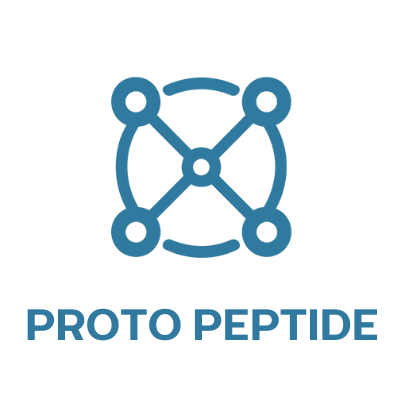Tirzepatide and Kidney Health: What Recent Studies Are Showing
Why Kidney Health Matters in Metabolic Research
Chronic kidney disease (CKD) often accompanies metabolic dysfunction, obesity, and type 2 diabetes. Two early indicators used in research are:
- Urine albumin-to-creatinine ratio (UACR) — higher values suggest kidney damage.
- Estimated glomerular filtration rate (eGFR) — lower values suggest reduced kidney function.
What Is Tirzepatide?
Tirzepatide is a dual GIP/GLP-1 receptor agonist investigated for its effects on weight, glycemia, and cardio-renal risk markers. Multiple analyses now explore its kidney-related outcomes in at-risk populations.
Key Kidney-Related Findings With Tirzepatide
1) Reduced Composite Kidney Events (Exploratory)
In an exploratory analysis of the SURPASS-4 study, tirzepatide was associated with a lower occurrence of a composite kidney endpoint compared with insulin glargine (hazard ratio ~0.58). Signals included less new-onset macroalbuminuria and a slower decline in kidney function among participants with type 2 diabetes and high cardiovascular risk.
Source: Lancet Diabetes & Endocrinology; PubMed summary.
2) Albuminuria Improvements
Across analyses, tirzepatide has been associated with reductions in UACR (albuminuria) over time—an important surrogate marker used in kidney research. A 2024–2025 body of work (including observational and randomized data) consistently reports albuminuria lowering with tirzepatide versus comparators, while noting standard safety considerations.
Sources: Diabetes Care 2023–2025; JAMA Network Open 2024; Journal of the American Society of Nephrology 2025 (advance online).
3) eGFR Trajectory: Nuance Matters
Analyses using creatinine-based eGFR show a slower decline with tirzepatide versus insulin in some cohorts; cystatin-C–based eGFR may show a different pattern early on (potential hemodynamic effects), with overall trajectories favoring kidney protection signals over time. Researchers emphasize looking at both biomarkers and longer time horizons to interpret renal effects.
Sources: Diabetes Care (cystatin C vs creatinine eGFR); ACC/JACC 2025 coverage in CKD/HFpEF subgroups.
What About Retatrutide?
Retatrutide is a next-generation triple agonist (GLP-1/GIP/glucagon) under active investigation. While kidney-specific outcomes are earlier-stage, recent analyses report:
- Reduced UACR (less albuminuria) at higher doses in participants with obesity and/or type 2 diabetes.
- Increased eGFR signals in participants with obesity (not consistently seen in those with T2D).
Ongoing and planned trials are designed to assess whether these parameter changes translate into hard clinical kidney outcomes over longer follow-up (e.g., progression of CKD, sustained eGFR slope changes).
Sources: Kidney International Reports 2025; PubMed 2025; trial registries (retatrutide renal and cardio-renal outcome studies).
How Could These Agents Influence Kidney Biology?
- Improved metabolic profile: Better glycemic control, weight reduction, and lower blood pressure contribute to less glomerular stress.
- Albuminuria reduction: Lower UACR is a favorable research signal tied to slower CKD progression in many contexts.
- Energy balance & lipid handling: Especially with triple agonism (retatrutide), increased energy expenditure and improved lipid flux may reduce ectopic fat, including in kidneys.
Practical Notes for Research Teams
- Track both creatinine- and cystatin C–based eGFR where possible for a fuller picture.
- Document baseline and longitudinal UACR to evaluate albuminuria trends.
- Consider cardio-renal risk clustering (BP, glycemia, lipids, weight) when interpreting kidney signals.
References (Selected)
- Exploratory kidney outcomes with tirzepatide in SURPASS-4 (hazard ratio signal, albuminuria): Lancet Diabetes & Endocrinology; PubMed.
- Tirzepatide and albuminuria/eGFR biomarkers (2023–2025): Diabetes Care (cystatin C vs creatinine eGFR); JAMA Network Open 2024.
- Kidney parameters with tirzepatide in obesity ± T2D (UACR reductions to week 72): JASN (advance online), 2025.
- ACC/JACC coverage in CKD/HFpEF subgroups (renal function signals): ACC press release, 2025; JACC 2025.
- Retatrutide kidney parameters (UACR, eGFR signals) and ongoing cardio-renal outcome studies: PubMed 2025; Kidney International Reports 2025; trial listings NCT05936151 and NCT06383390.
Disclaimer
This content is for informational and research-related purposes only. The peptides mentioned in this article are intended strictly for use in controlled laboratory settings by qualified professionals. It is not approved for human or veterinary use. Always follow your institution’s guidelines and consult safety data sheets (SDS) before handling any research chemical.
